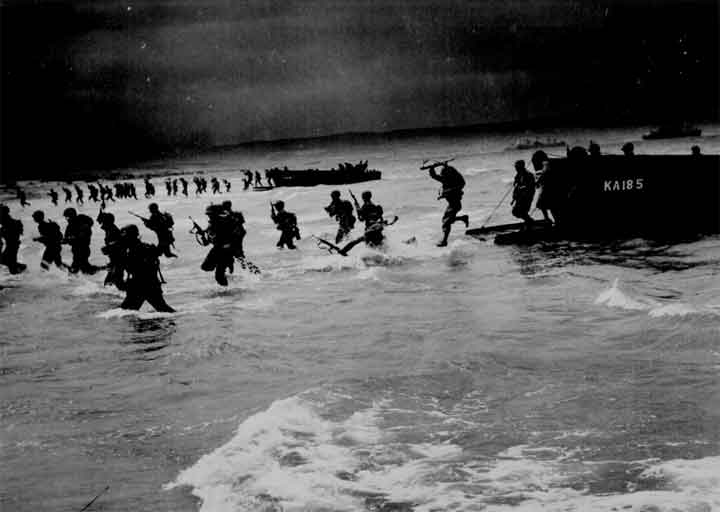November 8th, 1942 Operation Torch

Troops going ashore
The invasion of North Africa, called ‘Operation Torch,’ was carried out to surround German troops in the area. This offensive, which the British convinced Roosevelt to approve instead of creating a second front in Europe, involved sending American and British troops to French North Africa. Three separate forces were assigned to take Casablanca, Oran, and Algiers. The initial landings happened without pre-emptive
The Russians were constantly pressing United States and Great Britain to open a second front against the Germans. The American military wanted to land in France but the British opposed landing in France fearing it would fail. Instead the British wanted to land in North Africa, which they thought was important to relieve the pressure on Egypt. The Americans military opposed the landing there but President Roosevelt overruled the military and ordered that plans go forward.
The Allied planned simultaneous landing in three locations. There was a Western Task Force aimed at Casablanca, commanded by General Patton. This force included the 2nd armored division, and the 3rd and the 3rd and 9th infantry divisions, all together 35,000 troops who were transported directly from the US. The center group was aimed at Oran and was commanded by Major General Fredenall, and included the 1st infantry division and 1st armored division. These totaled 18,500 troops who had come from England. Finally the Eastern Task force was aimed at Algiers and consisted of US 34th infantry and the British 78th and was commanded by Lieutenant General Anderson, all together 20,000 troops.
The landing in Morocco were not preceded by any bombardment as it was hoped that the French would surrender without firing a shot. During the night preceding the invasion November 7th Free French supporters had attempted to stage a coupe against the Vichy government, but failed. As a result the Vichy high commissioner General Charles Nogues increased his defensives. US forces landed at three places and initially encountered heavy resistance. The overwhelming US naval support and air support however, neutralized the French forces and all the troops were able to establish beachheads and move inland, soon surrounding Casablanca. The French foolishly sent a naval force to try to stop the Americans. A French cruiser, six destroyer and six submarines were sunk. The partially completed battleship Jean Bart fired on US ships and was also quickly disabled.
The center force at Oran was met with naval gunfire and heavy opposition, but once again the overwhelming naval support quickly suppressed the French opposition. In the first successful allied airborne assault of the war French airfields outside Oran were seized.
In Algiers the resistance attempted to stage a coupe the night before the invasion. It was partially successful in taking control of french coastal guns, but was unsuccessful in persuading General Alphose Juin to surrender. US and British troops landed and faced limited opposition. Within hours of Oran had surrendered.
A total of 526 Americans were killed and a further 574 British lost their lives. The HMS Avenger and escort carrier was sunk on its way back to England by a German submarine.
 >
>